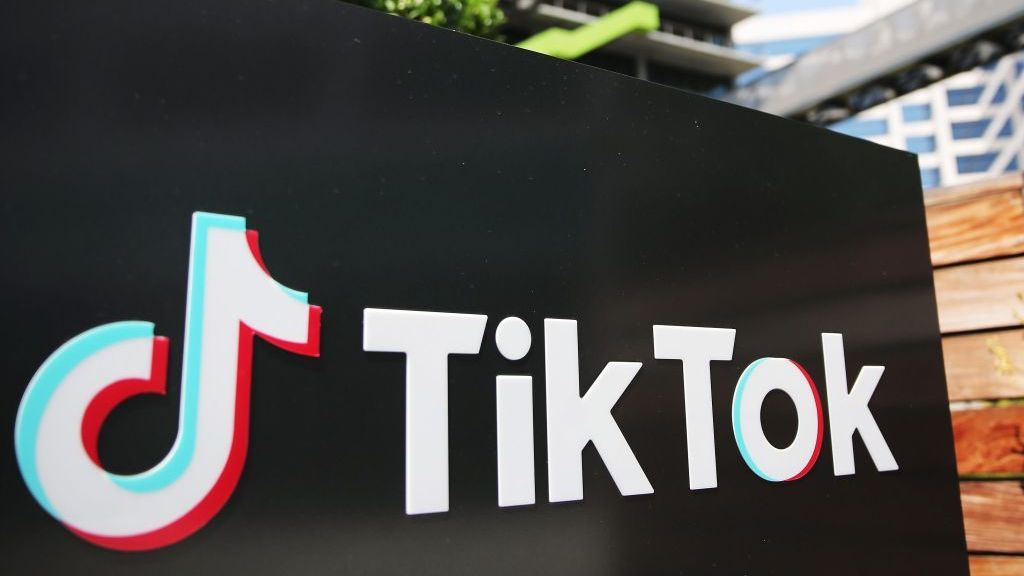
NEW YORK — Dr. Chad Stapleton started a TikTok account in March 2021 to help the patients at his Houston-based dentistry practice feel more at ease.
Four months later, the account has become a key element of his practice’s social-media advertising strategy. He gained new clients, garnered over 80,000 followers and his videos have been watched by millions around the world.
“In terms of free advertising, I feel like it’s the best tool right now to use,” Stapleton said.
Businesses large and small flocked to the short-form video app, which had been popular among Gen Z since it exploded in 2020. The pandemic drove quarantined users to its personalized stream of irreverent content.
From 2019 to 2020, U.S. TikTok users grew by 85.3 percent, reaching over 65 million users, according to the marketing website eMarketer, making it the most downloaded app of 2020. The app’s addictive algorithm, booming popularity and the reduced likelihood it would be banned, lured brands and advertisers from a broad spectrum of industries — fashion to pharmaceuticals.
“The pandemic probably solidified its presence in our culture,” said Jenna Drenten, associate professor of marketing at Loyola University Chicago.

While newspapers saw ad revenues decline in the first two quarters of 2020, TikTok tracked a 500 percent increase in advertisers running campaigns in the United States throughout the year. Ad buyers foresee these trends continuing — three-fourths of buyers expected their largest clients to spend on TikTok in 2021, according to eMarketer.
In the U.S., TikTok raked in approximately $500 million in revenue last year. The company reportedly made between $200 million to $300 million in 2019, The Information reported, from major brands, such as Pepsi, Warner Bros. and Amazon Prime, as well as smaller ones.
In December, Lyft, the Silicon Valley ride-hailing giant, announced it would provide 60 million rides to and from vaccination sites, and launched a new feature where users can gift rides to friends and families. To build awareness of their vaccine access programs, Lyft chose to test advertising with TikTok, teaming up with various TikTok influencers and boosting their posts in-feed.
“The scale and virality of TikTok right now is unmatched, and gives us the opportunity to efficiently reach and engage our target audience,” said Becca Grossman, Lyft’s director of brand media, over email.
Starting in 2020, TikTok rolled out a series of new features to strengthen its position in the digital advertising sphere. The app now has a self-serve advertising platform, similar to the Facebook ad manager, which allows advertisers to run their own campaigns. TikTok also lets advertisers boost posts in-feed and sponsor hashtag challenges that appear on users’ “for you” page.
That encourage them to participate, thus organically amplifying the ad.

What makes TikTok a powerful marketing tool is its carefully curated algorithm, said Mae Karwowski, founder-CEO of Obviously, a leading influencer marketing company. Unlike Facebook or Instagram — which only shows content once a user has followed an influencer or liked their page — TikTok’s algorithm can surface content from any creator within the app.
“It favors great content and great creators, which means you can grow extremely quickly,” Karwowski said.
Creating great content is an ongoing challenge for brands looking to advertise on the app. For any video to perform well, it needs to adhere to the cardinal rules of TikTok: all content has to be native to the platform and use its sounds, lingo, special effects and other conventions.
“People don’t want to see something that’s forced or paid for; they want to see organic things,” said Eli Rallo, a TikToker whose energetic videos of snack jars and cheeseboards catapulted her to over 260,000 followers. Instead of cranking out scripted content, Rallo encourages brands to give their influencers certain creative licenses, trusting they are the experts in what their followers want.
“I’ve figured out what’s going to do well and what’s not, so I think that they need to be talking to us,” Rallo said.
Within the last year, TikTok has caused many consumer items across the board to sell out, from cleaning gadgets like the Bissell Little Green Portable Carpet cleaner — which saw a 59 percent year-over-year sales increase in 2020 compared to 2019 — to beauty supplies such as Aerie leggings and Maybelline’s Sky High Mascara.

In a February 2021 shareholder presentation, Alexis Perakis-Valat, president of consumer products for Maybelline parent company L’Oréal, gave a shoutout to the Sky High mascara brand, saying it was off to an “impressive start,” despite the market-wide drop in makeup sales.
For small businesses, TikTok presents an opportunity for organic advertising rarely seen on other platforms, since all it takes is one viral post to build up a following, said Drenten. Even businesses with a niche geographic or demographic target audience — like Stapleton’s dentistry practice — can add the platform to enhance their marketing initiatives and trickle down to the intended target market.
But while the social media app will play a bigger role in advertising, it will be a while before the tech giant displaces some traditional methods of advertising.
“TikTok is not a replacement to how traditional advertising works in these geographically bounded areas, but it can be an incredible complement to your integrated marketing portfolio,” Drenten said.
(Edited by Fern Siegel and Bryan Wilkes)
The post TikTok Is The New Frontier For Advertisers appeared first on Zenger News.


Recent Comments